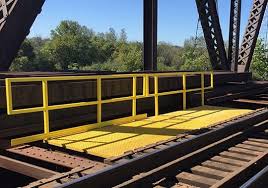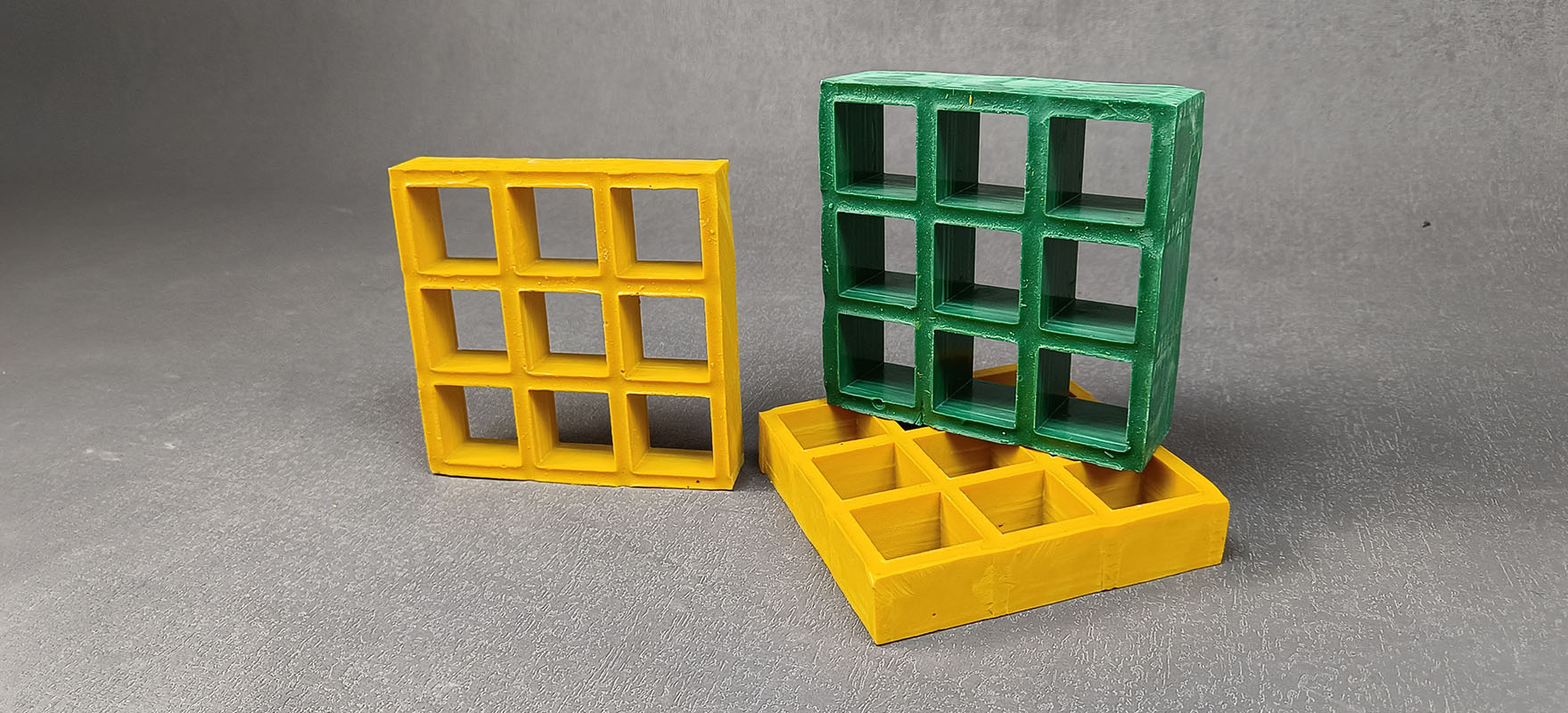The FRP installation process is very simple. However, errors may occur. Using the right tools and the right procedures will help ensure you get the most out of your FRP grating.

Use the right tools
A variety of standard power tools can cut fiberglass products. Best results are achieved with masonry, carbide, or diamond-embedded blades.
Worm gear driven circular saws are generally best for straight cuts. You can use an angle grinder, reciprocating saw, or jig saw to make curved cuts.
Use the correct cutting method
FRP bends and moves during the cutting process. Using a sawhorse or platform for support will help you avoid problems. Panels should be securely fastened.
Flip the FRP grating plate bottom side up for a smoother cutting surface. This helps reduce chipping. Use smooth, steady but not too heavy pressure to help prevent heat build-up.
![]()

There are many situations where you will use a straight cut. However, you should cut the grating panel at an angle to change the orientation.
Adjacent panels should be cut at the same angle. This allows the panels to match when you connect them together.
Sand and finish cut edges
If the cut edges of the grating panels are left intact, the fibers may degrade. After cutting, the edges need to be sanded smooth. A coarse resin fiber abrasive disc or coarse-grit sandpaper is a good choice for this task.
Light, even pressure helps avoid creating waves on the surface.
After sanding the edges, you can reseal them. Resins similar to those used to make FRP are a good choice for sealing. You can also use a UV-stabilized polyurethane spray.
Take appropriate safety precautions
Safety precautions are an important part of the FRP installation process. Cutting fiberglass can produce dust that can irritate eyes and skin. To avoid problems, your protective gear should include:
Gloves
Approved safety glasses or goggles
P2 dust mask
protective suit
Dust collection systems remove FRP particles and other debris, which also improves workplace safety.
Consider loads and deflections
FRP has a certain deflection. Failure to consider deflection can result in a soft feel to the grating and even create safety issues.
FRP installation guidelines for walkways recommend maintaining a deflection of 3/8 inch or less. 1/4 inch of deflection results in a sturdier feel. Deflection should not exceed 1/2 inch.
To calculate span length you need to know the load. Remember, static loading is different from dynamic loading or impact loading. Dynamic and impact loads increase deflection.
Sustained loading increases deflection due to creep. To ensure long-term performance, higher security controls are needed.
Use the correct fasteners
A minimum of four fasteners are required for each FRP grating panel.
The clip is made of stainless steel. You'll often find clamps made from 316-grade stainless steel because of its corrosion resistance. Grades 304 and 306 are other common materials.
Clips should be at least 1 1/2 inches from the edge of the panel. The type of fastener used depends on the type of fastener.
The connections you need to make and whether the FRP is molded or pultruded.
You can use M-clips with molded or pultruded grilles. The M-Clamp uses two adjacent bearing rods to secure the grille plate to the bracket. They provide a very secure fixation.
G-clamps are another option and have very good two-way holding capabilities. They secure molded or pultruded gratings to structural member flanges.
For lightweight applications, you can use J-clips for pultruded grating or L-clips for molded FRP.
Add.: Xiao Zhang industrial area, Zaoqiang County, Hengshui city, Hebei province, China.
Copyright © 2018 Miyafrp, all rights reserved. |Sitemap |